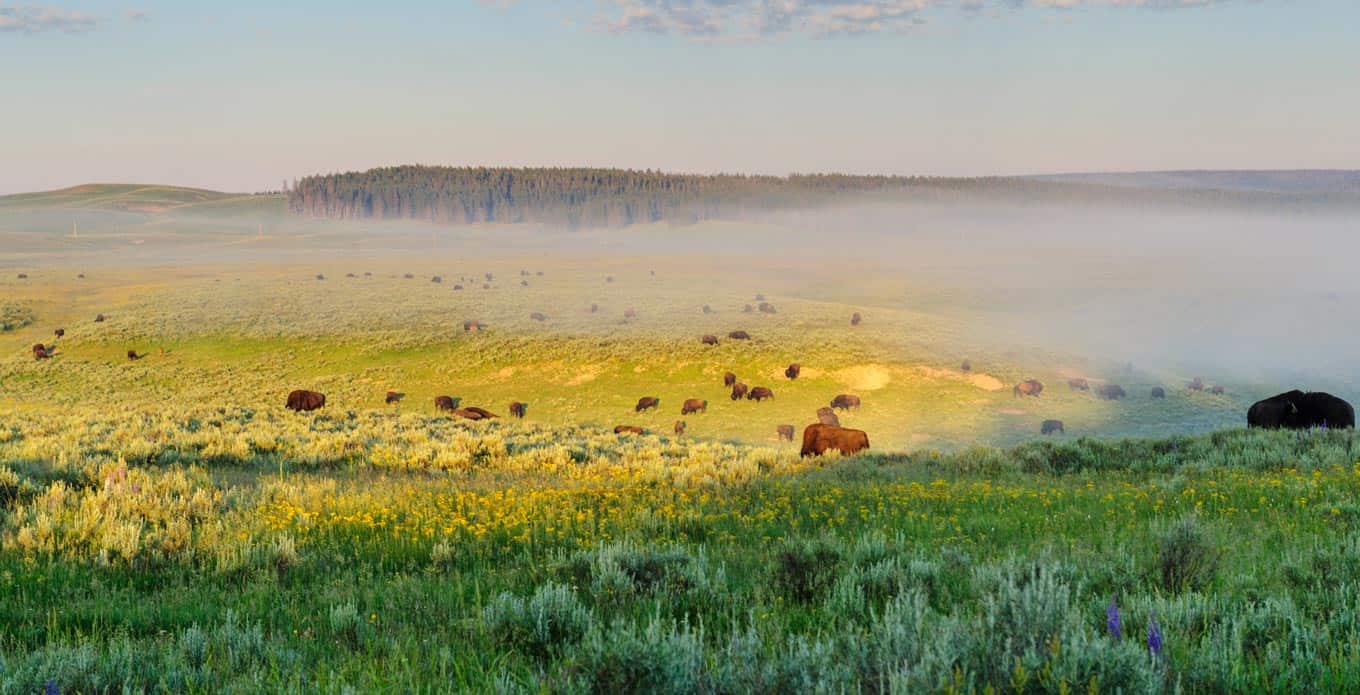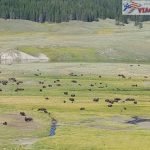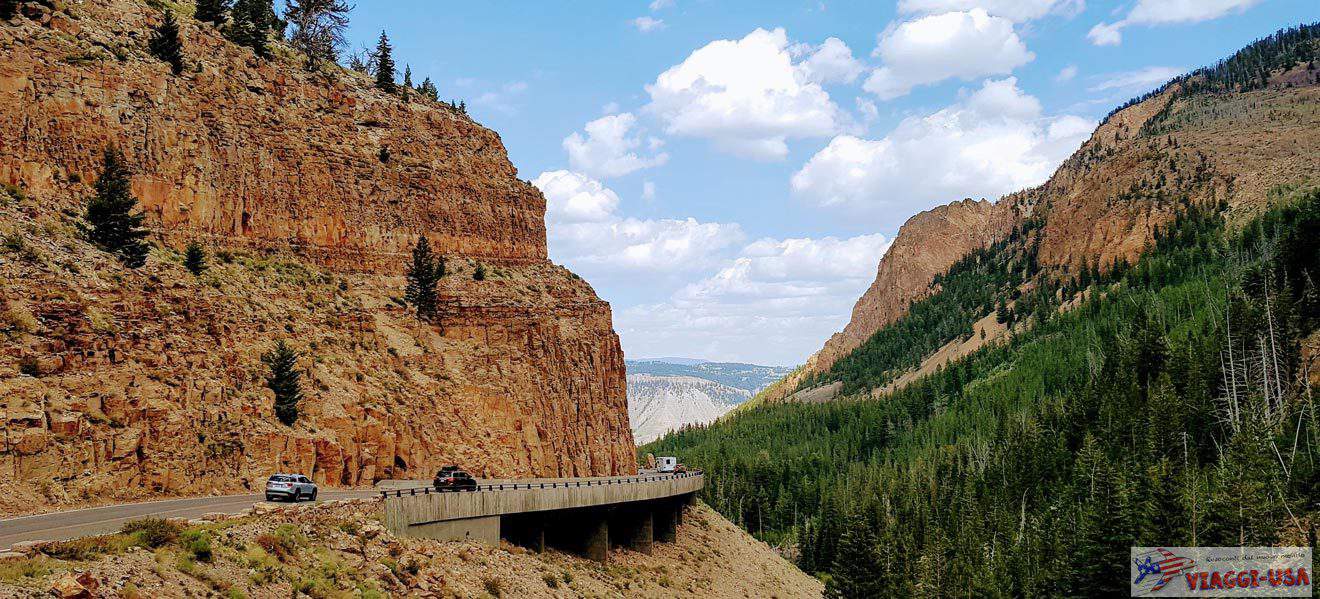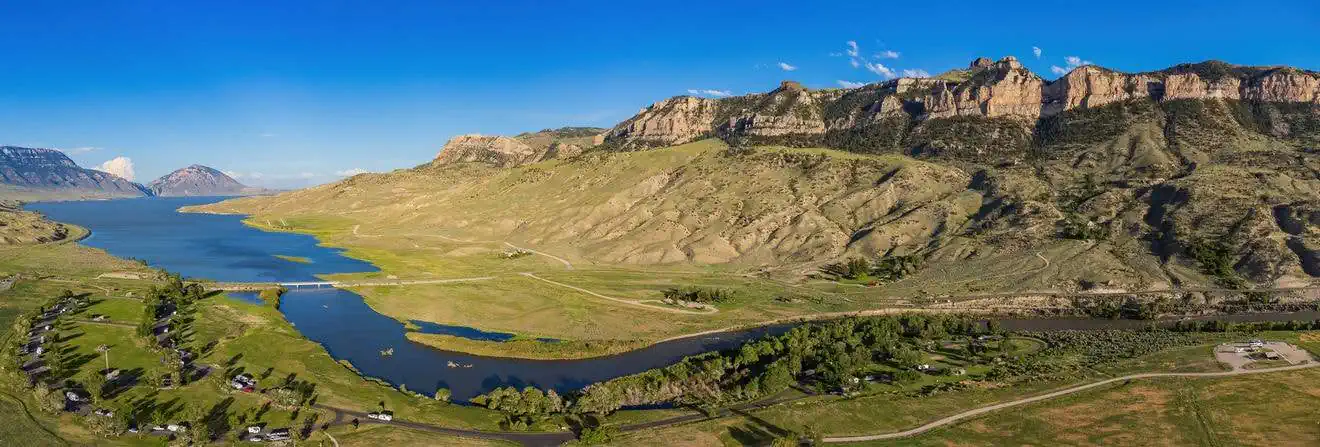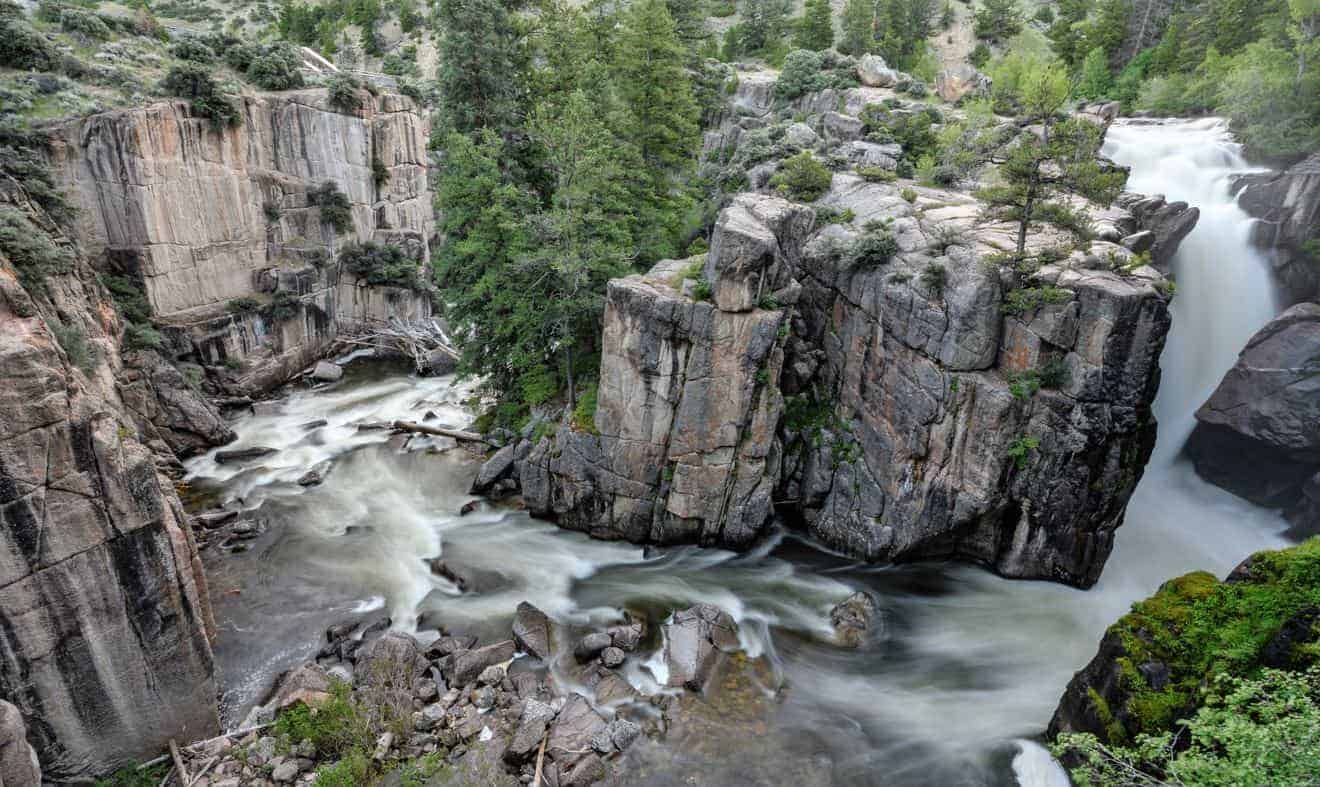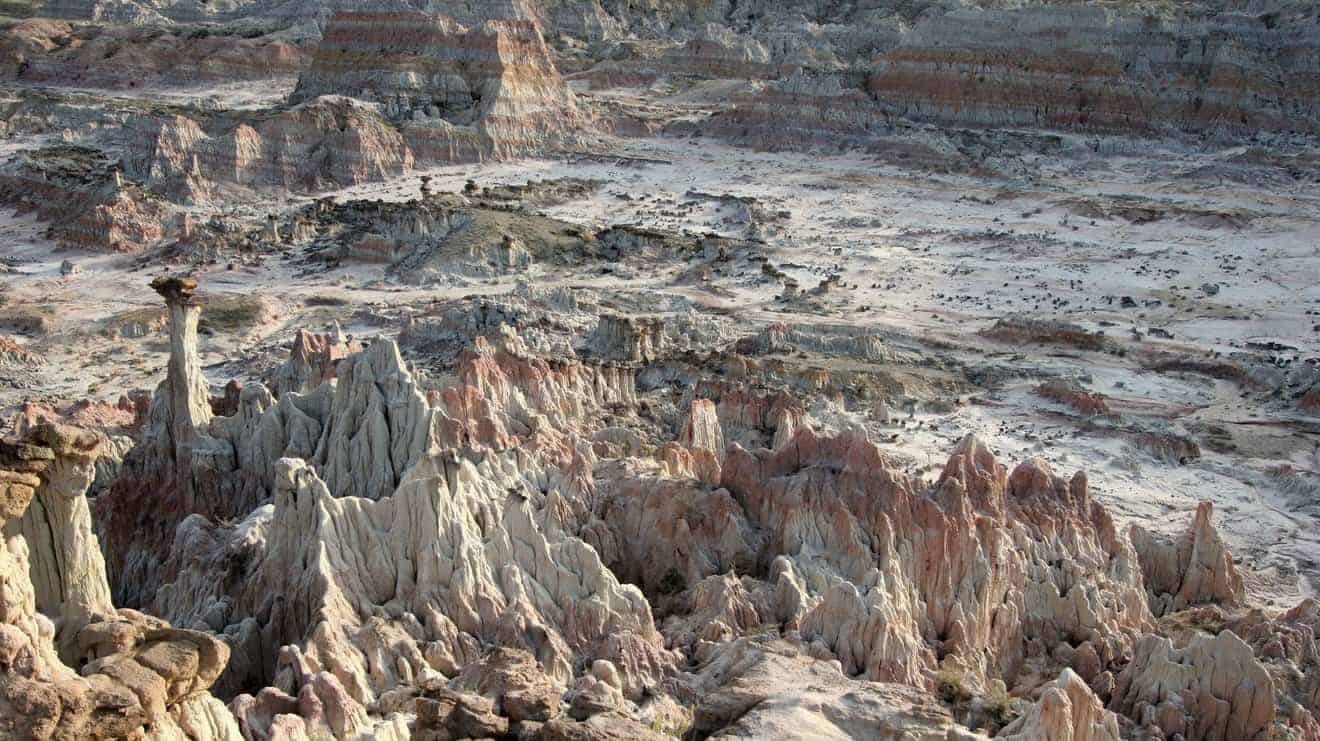Often when one speaks of Yellowstone, one thinks of geysers, fumaroles, hot springs, large lakes, and roaring waterfalls, and more rarely of its majestic and verdant valleys, true natural paradises that deserve to be visited mainly for 2 reasons: their intrinsic beauty and the very high probability of spotting wildlife. Bison, bears, deer, elk, antelope, wolves, eagles, and many other specimens of Yellowstone fauna inhabit the Hayden Valley and Lamar Valley areas, and crossing these valleys is like going on a small safari amidst the North American fauna (for those who are passionate about this subject, I also recommend my article on the Best Places to See Wildlife in Yellowstone and Grand Teton).
These 2 beautiful valleys can be traveled through easily by car, often at a walking pace due to the traffic caused by the crossing of animals (bison mainly) and, possibly, with binoculars in hand, with your eyes full of wonder. So let’s find out what awaits us as we cross the Yellowstone valleys, together with some tips to choose between Hayden Valley and Lamar Valley.
Contents
Map of the 2 Yellowstone Valleys
Hayden Valley: where it is and what to expect
This 50-square-mile lush valley lies along the Yellowstone River, in the area between the Grand Canyon of the Yellowstone and Yellowstone Lake, and is named after Ferdinand Vandeveer Hayden, whose research (and particularly his 1871 geological expedition) played a decisive role in Yellowstone’s designation as a national park and the preservation of its ecosystem. In Hayden Valley, you can observe a remarkable variety of animals, although here, more than in any other place in the park, the undisputed rulers are the bison, which you will see moving around in large herds and blocking the traffic, passing just a few inches from your car. Add to this the wonderful green scenery of the valley, the perfect setting to unleash your photographic talent. As if that were not enough, in the valley there are also other places of interest not to be underestimated. Here they are in order from north to south:
- Sulphur Caldron: a view over a hydrothermal area where one of the park’s most acidic hot springs is located, with its turbulent yellowish sprays resembling a skilled sorceress’ potions.
- Mud Volcano: a hydrothermal area with fumaroles, boiling mud, and hot springs. The itinerary follows 2 loops of wooden walkways that allow you to see the site’s 2 main attractions, Mud Volcano and Dragon’s Mouth Spring, up close. The area is also great for bison spotting.
- Hardy Rapids: actually not in Hayden Valley, but a few miles south, towards Lake Yellowstone, there is another good opportunity to see Yellowstone wildlife in their habitat (visible from a walkway). In the spring you may catch a glimpse of mating ducks, or a grizzly in search of good fish, while in late June/early July you may see trout leaping over the rapids. Pelicans and otters also come here for their usual fishing activities and sometimes you may even see a bear struggling with the carcass of a bison (see photo below). The boardwalk is accessed from the usual parking lot, but the site is not well marked (or at least I didn’t see any signs indicating it); to help yourself find it, it’s about 2.8 miles after Mud Volcano.

How to get to Hayden Valley and how to fit it into an itinerary
Because of its location, Hayden Valley can be easily slotted into an itinerary on the same day you visit Yellowstone Lake and the Grand Canyon, the 2 attractions that border the valley. Its nearly central location in the park makes it more or less equidistant from all the entrances to Yellowstone. For some examples of itineraries that include Hayden Valley, please take a look at my Yellowstone trip itinerary.
Photo Gallery
Lamar Valley: where it is and what to expect
Bison, elk, black and grizzly bears, wolves, antelope, eagles, and coyotes are just a few of the animals you’ll see as you travel through Lamar Valley, which has been dubbed America’s Serengeti due to its wealth of wildlife. The valley lies between Tower Junction and the northeast entrance (Cooke City), off the so-called Grand Loop, the figure 8-shaped trail that incorporates all (or most) of the park’s major attractions, and runs along the 29-mile Lamar Road, Yellowstone’s only year-round road.
As soon as you turn off at Tower Junction / Roosevelt (whether you’re coming from Mammoth Hot Springs or the Grand Canyon of the Yellowstone), after about a mile you’ll cross the ubiquitous Yellowstone River, and it’s here that you’ll need to start keeping your eyes peeled as from this point on the chances of interesting encounters increase dramatically. The Lamar Road is ideally divided into 3 parts:
- the first section includes the stretch between the bridge over the Yellowstone River and the bridge over the Lamar River. Although the scenery is not the best in the valley, there is a good chance of spotting bears and wolves. Slough Creek Campground and Yellowstone Picnic Area are also located here.
- the second section could be considered the Lamar Valley proper, characterized by wide open landscapes carved out by glaciers during the Ice Age. Here too there is no shortage of opportunities to observe wildlife and you will find many openings to stop your car and take pictures. This section is also home to the Lamar Buffalo Ranch, which is on the National Register of Historic Places.
- the third part of the road begins at the junction of the Lamar River and Soda Butte Creek, framed by the mountains that will accompany you to the park’s northeast exit. In addition to wildlife, along the way, you will see Soda Butte, Pebble Creek Campground, and Ice Box Canyon.
How to get to Lamar Valley and how to fit it into an itinerary
Despite not being part of the Grand Loop, fitting Lamar Valley into your Yellowstone itinerary is far from impossible. If you stay overnight in Cooke City you will reach the valley in just a few minutes, while if, as it often happens, you stay overnight in the other main areas of the park (read my article on best places to stay in Yellowstone), then you will have to reach the Tower-Roosevelt intersection and turn east (direction North East Entrance / Cooke City).
Photo Gallery
Hayden Valley vs Lamar Valley: which one to choose?
The differences between Hayden Valley and Lamar Valley are not substantial, so my advice is to include both valleys in your trip to Yellowstone. Sometimes, however, time is a constraint and may force you to make a choice: which one do you prefer? The answer is not so simple. I wouldn’t rely too much on the probability of seeing wildlife, as you can never be sure, for example, that you will come across a bear in one valley rather than in another, but I would rather focus on the logistical/organizational aspect: if time doesn’t allow you to visit both valleys, it is very likely that you will be almost “forced” to go to Hayden Valley, basically as being on the Grand Loop and closer to the other main attractions, it is easier to fit in. A final personal note to reinforce what I have already said is that, without taking anything away from Lamar Valley, the beauty of some of the landscapes of Hayden Valley is in my opinion perhaps just a notch above, but this is a purely subjective opinion.
The best time to visit Yellowstone Valleys

The time when the animals are most active is at dawn and dusk, which are also the times when the valleys are least congested with tourists. As for the visiting periods, Hayden Valley can be crossed only when the park’s main roads are open (from spring to autumn), while Lamar Valley is accessible all year round. In winter, when it is entirely covered with snow, it offers beautiful landscapes, as well as a good chance of seeing wolves, bison, and other members of the Greater Yellowstone Ecosystem. Also, check out my article on the best time to go to Yellowstone.
